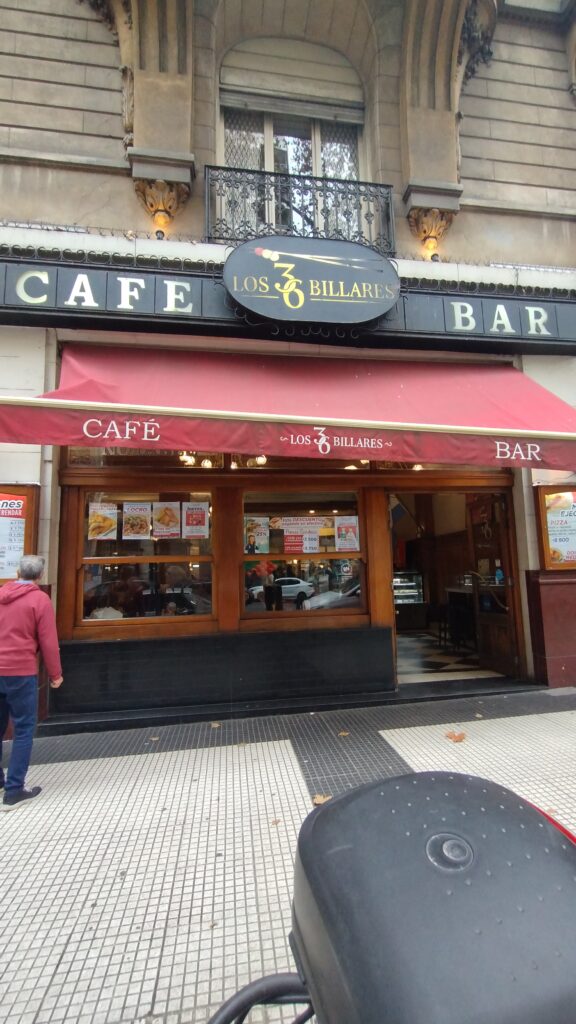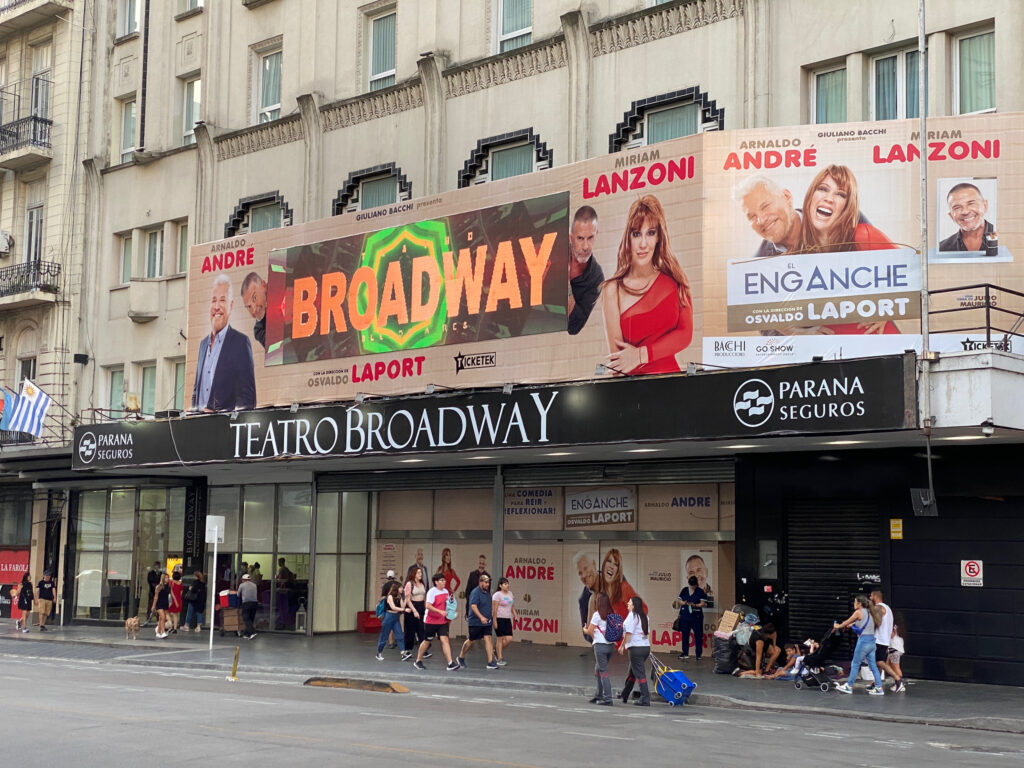Curious about why Buenos Aires Downtown is the best place to stay for digital nomads, travelers, and expats? In terms of strategic location and attractions, Buenos Aires Downtown tops the list.
With hundreds of reasonably priced hotels, hostels, and apartments, this largest commune of Buenos Aires extends from north to south and is constantly alive with activity.
As the financial and economic center, it’s a hotspot for tourists. Many buildings are currently being transformed from offices into residential spaces, with support from the City of Buenos Aires and local banks offering mortgages. While it may not be as tranquil as Palermo, Belgrano, or Villa Crespo, the area is safe, with ongoing efforts to reduce the presence of street vendors and homeless individuals.
Political demonstrations often target key landmarks like the Obelisk, National Congress, and Plaza de Mayo, adding some weekday chaos.
However, staying in Buenos Aires Downtown offers unbeatable access to explore the entire city. Check out our detailed guide on ExpatPathways for everything you want to know about Buenos Aires Downtown.
Buenos Aires Downtown: Everything You Want to Need About The Neighborhood
Basic Information About Buenos Aires Downtown
When we talk about Buenos Aires Downtown, we refer to a collection of neighborhoods that form a vast area. This zone is the nerve center of the city, where not only transportation, professionals, and students converge, but also the most important companies and public agencies of Buenos Aires.
This area is filled with tall buildings and constructions. The architecture, with subtle variations across different neighborhoods, showcases early 20th-century structures alongside modern buildings, creating a striking contrast.
Organized under Commune 1, Buenos Aires Downtown includes the neighborhoods of San Telmo, Constitución (south), Puerto Madero (east), Retiro (north), Monserrat, and San Nicolás (central).
This district hosts the city’s financial hub and is one of the most significant tourist areas, attracting thousands of visitors with its cultural offerings: iconic tango venues like El Viejo Almacén, Florida Street, and Avenida de Mayo, designed two centuries ago to emulate major European avenues, artisan fairs, and prominent antique dealers.
It witnessed the installation of Latin America’s first subway and houses two main train stations: Retiro and Constitución.
Additionally, it contains the principal buildings of the executive (national and local), judicial, and legislative branches, including the Legislature of Buenos Aires, symbolizing the republican form of government.
Spanning 17.4 square kilometers, Commune 1 has a population of 223,282 inhabitants as per the 2022 census, indicating demographic growth since 2010.

Key attractions in Buenos Aires Downtown include:
- Skyscrapers and modern buildings
- Metropolitan Cathedral, City Cabildo, and Manzana de las Luces
- Major avenues like 9 de Julio, Corrientes, Córdoba, Leandro N. Alem, Belgrano, and Paseo Colón
- Important banking, financial, and administrative entities
- Pedestrian and commercial streets like Florida and Lavalle
- Government buildings
- Southern and northern train terminals
- Ecological Reserve in Puerto Madero
- Docks and harbors of Puerto Madero
Where Is Buenos Aires Downtown?
The boundaries of Commune 1 are: southern edge of Dársena D, Av. Tomás Edison, Wilson access, Av. Pte. Ramón Castillo, Dr. A. Illia Highway descent (port access) to the intersection with Illia Highway, virtual extension of Juan Bibiloni, Brig. Gral. F. Quiroga, Montevideo Projection, Montevideo, Guido, Uruguay, Av. Córdoba, Av. Callao, Av. Entre Ríos, Av. Caseros, Paracas, virtual extension Ituzaingó (bridge), Guanahani, Dr. Enrique Finochietto, Gral. Hornos, Av. Caseros, Av. Defensa, Av. Martín García, Av. Paseo Colón, Av. Brasil, extension of Av. Elvira Rawson de Dellepiane, Av. Elvira Rawson de Dellepiane to the intersection with the Costanera Sur wall, Costanera Sur wall, southern cadastral boundary of the Ecological Reserve, Río de la Plata.
A notable feature of Buenos Aires Downtown (Commune 1) is its borders with other significant neighborhoods like Balvanera, Boedo, La Boca, and Recoleta, highlighting its strategic location for exploring Buenos Aires.
Public Transport Network in the Buenos Aires Downtown
The extensive area covered by Commune 1, encompassing Buenos Aires Downtown, means that practically any mode of transport is a viable option for traveling within the commune or to other parts of Buenos Aires.
Firstly, the Buenos Aires subway system predominantly serves the downtown area, with lines A, B, and D running east to west and lines C and E running north to south. These lines have stations throughout the downtown area and are heavily used by workers and students.
Railways are also integral, with two main train terminals, Constitución and Retiro, located in Commune 1. These stations serve medium and long-distance trains traveling throughout Buenos Aires and the province, and offer connections to other modes of transport, including subways and buses.
Buses are another key component, with almost all major bus lines passing through or originating in Commune 1. Additionally, the Metrobus system, with exclusive bus lanes along major avenues like 9 de Julio and Avenida Leandro N. Alem, provides a quick alternative for getting around Buenos Aires. The Metrobus was designed to ease traffic congestion and reduce the burden on the subway system.
Regarding private vehicle traffic, the Buenos Aires government has policies aimed at discouraging private vehicle use in Commune 1 to promote public transport, bicycles, and taxis, and to reduce traffic congestion.
Green Spaces in the Buenos Aires Downtown
While Buenos Aires Downtown, due to its urban design and architecture, may not be the most endowed with green spaces, its size and expanse do allow for some proximity to parks and plazas.
The Puerto Madero Ecological Reserve stands out as a key green space, offering biking paths, wildlife observation, and a place to exercise away from the concrete jungle. Its proximity to Puerto Madero’s beautiful docks adds a unique charm.
Throughout Commune 1, you can find several green spaces, such as Parque Lezama and Plaza Constitución in the south, Plaza de los Dos Congresos and Parque Colón in the central axis, Plazas Lavalle and Libertad further north, and Plaza General San Martín in the north, which also features the iconic Torre Monumental (Torre de los Ingleses).
Advantages of Living in the Buenos Aires Downtown
- Buenos Aires Downtown offers a plethora of accommodation options for foreigners, including hotels, hostels, and apartments competing fiercely to attract travelers.
- The term “Buenos Aires Downtown” refers to multiple neighborhoods centered around the Obelisk.
- Except for early weekend mornings, Buenos Aires Downtown is constantly bustling with activity, ensuring you’ll never feel alone or isolated.
- One major advantage of staying in Buenos Aires Downtown is its prime location, making it easy to explore all parts of Buenos Aires.
- The area features numerous high-rise buildings, and the 2020 pandemic led many real estate firms and owners to convert office spaces into residential units, offering plenty of living options.
- Major public transport options run continuously through Buenos Aires Downtown, from subways to numerous bus lines, providing various mobility choices.
- Although some shops cater specifically to tourists, the area generally offers good prices, making it less expensive than neighborhoods like Palermo or Belgrano.
Activities and Things to Do in the Buenos Aires Downtown
Explore Historical Sites
Buenos Aires Downtown is historically significant, with buildings, streets, and plazas that have been central to the nation’s founding and history. We recommend exploring these historic streets, from major avenues to picturesque lanes perfect for photography and video capture.
Observe Government Buildings
As the political and governmental hub of Argentina, Buenos Aires Downtown houses important public administration buildings and the three branches of government.
Besides the iconic Casa Rosada in Plaza de Mayo and the National Congress, there are other notable buildings like the Customs House, Ministry of Economy, Buenos Aires Cabildo (although it no longer serves as an office), and headquarters of major public banks.

Enjoy the Architecture
The architecture of Buenos Aires Downtown is striking, with high-rise buildings, palaces, and various expressions of historical and modern design dominating the skyline. The contrast between old and new is a delight for architects, landscapers, and design enthusiasts.
Restaurants and Bars Everywhere
Buenos Aires Downtown offers numerous dining and drinking options, from executive menus to dishes catering to foreigners and locals alike.
You can enjoy Argentine cuisine at reasonable to slightly expensive prices, with options ranging from grills and Italian restaurants to Spanish food, pizza, and more.
Notable Cafés
Notable Cafés (Bares Notables) are iconic places recognized for their cultural and historical significance. Enjoying a coffee, breakfast, or snack at one of these cafés offers a unique experience, allowing you to savor traditional Argentine delights such as medialunas, sandwiches, alfajores, and even meals like milanesas, pasta, and meat dishes.

Tango at Your Fingertips
Two main areas in Buenos Aires are known for tango: Abasto and Buenos Aires Downtown. The downtown area offers tango concerts, schools, and bars where tango is part of the experience.
You can enjoy performances or participate in dance classes to learn the basic steps of this world-renowned musical genre.
Theaters and Concerts
Corrientes Avenue is an open-air theater district with bright, neon-lit marquees. Since the early 20th century, this avenue has illuminated Buenos Aires Downtown with artistic offerings, from operas and musicals to comedies and dramas.
Many Argentines and tourists alike enjoy a night at the theater followed by a slice of iconic Argentine pizza on Corrientes.

Last Considerations
Ready to make Buenos Aires Downtown your next destination? This bustling and strategically located neighborhood offers everything you need, from reasonably priced accommodation to a rich array of historical sites, green spaces, and vibrant cultural activities.
As the largest commune, Buenos Aires Downtown is perfect for digital nomads, travelers, and expats who want to immerse themselves in the heart of the city.
With ongoing renovations transforming old office buildings into modern residences, supported by the City of Buenos Aires and local banks, this area is evolving rapidly.
Discover why Buenos Aires Downtown is the ultimate choice for your stay by exploring our in-depth guide on ExpatPathways. Dive in and see what makes this neighborhood the perfect spot to explore all Buenos Aires has to offer.


